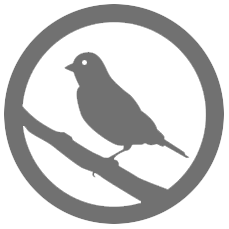CETME and HK flat bending jig
about
This is a printable bending jig for CETME and G3 receiver flats to both bend the flat evenly, and keep it properly shaped. It should work on all HK style flats, but I don't have any others on hand to test. The "Mandrel Filler" pieces should be installed once the flat is most of the way there. A complete rundown of how to use it can be found here: https://jeffstoybox.blogspot.com/2020/10/my-3d-printed-cetme-and-hk-g3-bending.html
FOLLOW THE DIRECTIONS LAID OUT IN THE BLOG POST OR YOUR FLAT MAY END UP OUT OF SPEC.
*Edit: If you got the very first upload, the Jig Rear file was wrong. It was a copy of one of the mandrel pieces by mistake and it is now the correct file.
*Edit: I've also added one piece jig and mandrel files if you've got a really big printer. the internal tubes for the dowel rods are still there so if you don't want them to print you'll have to check Cura's "Union Overlapping Volumes" option.
*Edit: Based on a user review, I recommend printing the two piece version, even if you have a big printer. Having two pieces allows you to adjust for length in case the holes in your flat aren't exactly on, or your printer prints a little out of spec.
Printer brand:
Wanhao
Printer:
Wanhao Duplicator i3 V2
Rafts:
Supports:
Resolution:
Infill:
Filament brand:
Filament material:
PLA+
Notes:
It's printed in eSun PLA+, standing on end, .16 layer height, 8 walls, 15% Gyroid infill, .45mm line width(with .4 nozzle), 107% wall flow and 120% infill flow to "overstuff" the layers for better layer adhesion, a higher than normal 220°C and only 70% cooling fan, again for better layer adhesion. These are the basic setting for all my "strong" parts. Using these setting I get significantly stronger prints than the "standard" print settings, at the cost of a not quite as smooth surface finish.
The main pieces are made to use 1/2" hardwood dowels for alignment. It is best to clear the holes with a 1/2" drill bit first, and I didn't bother gluing the pieces together, it worked well enough as is. The end bolt holes are sized as 1/4" through holes on the mandrel and 1/4" threaded holes on the jig base. You may be able to force the threads in, but it would be best to tap them 1/4-20.
files
| File | Extension |
|---|---|
| Mandrel_Filler-print_4.STL | STL |
| CETME-G3_Mandrel_one_piece.STL | STL |
| CETME-G3_Mandrel_Rear.STL | STL |
| CETME-G3_Mandrel_Front.STL | STL |
| CETME-G3_Jig_one_piece.STL | STL |
| CETME-G3_Jig_front.STL | STL |
| CETME-G3_Jig_Rear.STL | STL |
versions
Version: 1.0.0 latest
Initial release
about
This is a printable bending jig for CETME and G3 receiver flats to both bend the flat evenly, and keep it properly shaped. It should work on all HK style flats, but I don't have any others on hand to test. The "Mandrel Filler" pieces should be installed once the flat is most of the way there. A complete rundown of how to use it can be found here: https://jeffstoybox.blogspot.com/2020/10/my-3d-printed-cetme-and-hk-g3-bending.html
FOLLOW THE DIRECTIONS LAID OUT IN THE BLOG POST OR YOUR FLAT MAY END UP OUT OF SPEC.
*Edit: If you got the very first upload, the Jig Rear file was wrong. It was a copy of one of the mandrel pieces by mistake and it is now the correct file.
*Edit: I've also added one piece jig and mandrel files if you've got a really big printer. the internal tubes for the dowel rods are still there so if you don't want them to print you'll have to check Cura's "Union Overlapping Volumes" option.
*Edit: Based on a user review, I recommend printing the two piece version, even if you have a big printer. Having two pieces allows you to adjust for length in case the holes in your flat aren't exactly on, or your printer prints a little out of spec.
Printer brand:
Wanhao
Printer:
Wanhao Duplicator i3 V2
Rafts:
Supports:
Resolution:
Infill:
Filament brand:
Filament material:
PLA+
Notes:
It's printed in eSun PLA+, standing on end, .16 layer height, 8 walls, 15% Gyroid infill, .45mm line width(with .4 nozzle), 107% wall flow and 120% infill flow to "overstuff" the layers for better layer adhesion, a higher than normal 220°C and only 70% cooling fan, again for better layer adhesion. These are the basic setting for all my "strong" parts. Using these setting I get significantly stronger prints than the "standard" print settings, at the cost of a not quite as smooth surface finish.
The main pieces are made to use 1/2" hardwood dowels for alignment. It is best to clear the holes with a 1/2" drill bit first, and I didn't bother gluing the pieces together, it worked well enough as is. The end bolt holes are sized as 1/4" through holes on the mandrel and 1/4" threaded holes on the jig base. You may be able to force the threads in, but it would be best to tap them 1/4-20.
creator
Metrics
Views
3.7K
Project Info
release date
Oct 4, 2020
artifact type
library category
fabrication method
fabrication tool
3D Printer
release country
United States
language
English
license
Creative Commons Attribution-NonCommercial 4.0 International
version hash
QmaQE9NJ2xk2KGUkJtw9fZWSNvM9SrwQvLzAj3SkC8Rcao
files
| File | Extension |
|---|---|
| Mandrel_Filler-print_4.STL | STL |
| CETME-G3_Mandrel_one_piece.STL | STL |
| CETME-G3_Mandrel_Rear.STL | STL |
| CETME-G3_Mandrel_Front.STL | STL |
| CETME-G3_Jig_one_piece.STL | STL |
| CETME-G3_Jig_front.STL | STL |
| CETME-G3_Jig_Rear.STL | STL |
versions
Version: 1.0.0 latest
Initial release
The files shown on this site are only available to U.S. Persons, as defined at 22 C.F.R. 120.15. The files are also not available to persons outside the United States or to residents of and persons in the State of New Jersey, with the exception of Federal Firearms Licensees.




